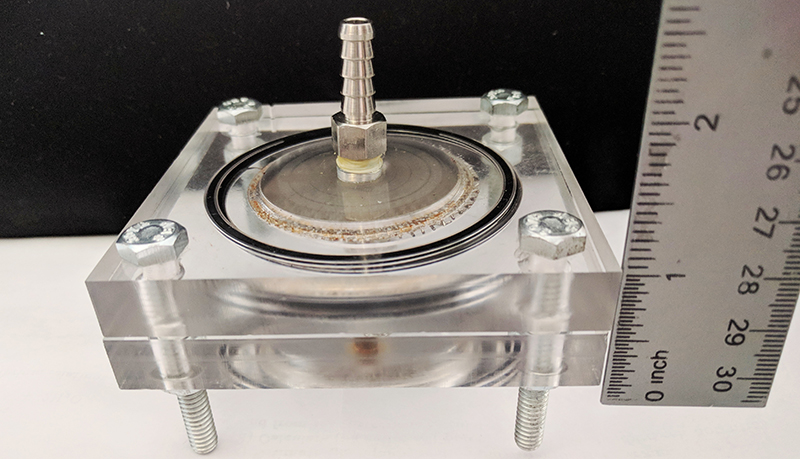As useful as water is to quench our thirsts, wash our clothes, or prepare our food, it can also be damaging, especially when it comes to diesel fuel systems.
Just ask filtration engineering expert Dr. George Chase, a professor of chemical and biomolecular engineering here. He has a patent pending for a separation device that would help remove water droplets from fuel, thus preventing damage to engines and fuel systems.

Dr. George Chase
“Water, in liquid or dissolved form, can produce rust particles and contaminants due to corrosion in diesel engines and fuel systems in trains, construction equipment, trucks, boats — anything that operates on diesel fuel,” said Chase. “The rust particles and contaminants can plug fuel injectors and can erode and damage sensitive engine components. Excess water is a challenge to remove from diesel fuel, especially when in the form of micron-sized droplets. By getting water out of the fuel, we’re not only helping to prevent damage, but the engines will operate more fuel efficiently, burn the fuel more cleanly and emit fewer particles in the air.”
It's easy for water to enter a fuel system through avenues like condensation of humid air, or if the gas tank cap is open while it’s raining.

The prototype separation device created by Dr. George Chase and his team is designed to more efficiently separate and remove water droplets from diesel fuel.
Chase’s device is designed to enlarge water droplets to make them easier to separate from the fuel. The prototype device is a thin square box that’s 1-inch-thick with two stainless steel inlet and outlet tubes on the front and back sides holding layers of steel wire mesh. The device is intended to be situated in the fuel line of a diesel vehicle, between the gas tank and the engine fuel filter. It’s designed for a flow rate of about 40 milliliters per minute and would be scaled for use on typical engines.
Water is denser than fuel, and the bigger the water droplets, the easier they are to remove. The filter works by electrifying the stainless-steel mesh, and as the diesel fuel flows through the mesh, the water drops are attracted to each other and coalesce into larger drops.
Chase and his team participated in UA’s I-Corps program to research and determine industry needs and interest for the filter device. The team members established an industry need for such a product, and companies have expressed interest in the filter if something like it were on the market.
The filter, Chase noted, could be beneficial to companies that transport and dispense diesel fuels, those that sell diesel engine vehicles, and those that cover warranty repair costs of diesel engines.
Media contact: Alex Knisely, 330-972-7429 or aknisely@uakron.edu.
